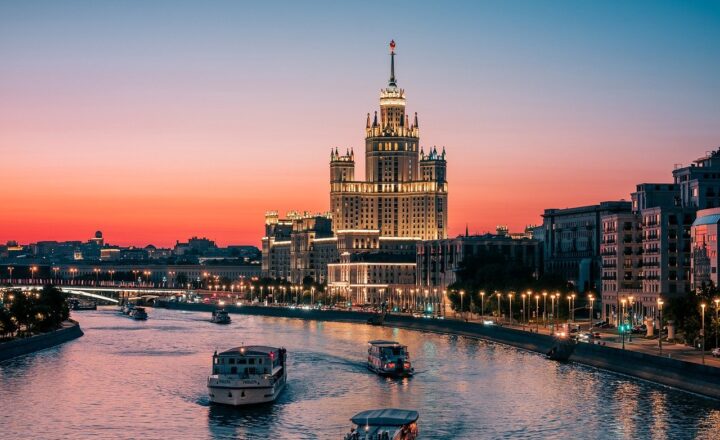The Mafia’s Role in Shaping the New York City Skyline
November 15, 2024

When we gaze up at the towering buildings of New York City, it’s easy to admire the architectural prowess and economic might on display. However, behind this majestic skyline lies a story intertwined with the infamous Mafia, an organization that, both directly and indirectly, shaped the very growth and design of America’s most iconic city. From construction projects to strategic real estate deals, organized crime has played a pivotal role in New York’s development.
1. A Historical Perspective on the Mafia in New York
The Mafia, particularly the Italian-American Mafia, gained a firm foothold in New York City during the late 19th and early 20th centuries. This period was marked by a significant influx of immigrants from Italy, many of whom came seeking the American Dream but found themselves embroiled in poverty, unemployment, and a lack of legal channels to support themselves. In this chaotic environment, organized crime groups emerged, offering protection, employment, and a sense of community.
As these groups grew in power, their influence seeped into various sectors, most notably construction. The Mafia’s connection to New York’s unions allowed them to exert control over construction projects, shaping both infrastructure and the skyline itself.
2. Construction and the Mafia: A Symbiotic Relationship
During the boom of the mid-20th century when New York was undergoing rapid urban development, organized crime became heavily involved in waterfront and construction industries. Here’s how the Mafia impacted the city’s skyline:
Labor Unions and Control
The Mafia’s infiltration of labor unions enabled them to control the workforce and dictate terms on construction sites. Isolated from the authorities and backed by intimidation, Mafia-affiliated unions would ensure that their members were hired for jobs, significantly impacting labor costs in construction projects, including skyscrapers, bridges, and other monumental structures.
Shady Dealings and Corruption
Corruption was rampant in New York’s construction industry. Mafia bosses often engaged in bribery to ensure contracts were awarded to companies they controlled. This meant that the quality of construction could sometimes be sacrificed for faster profits. Notable examples include:
- The World Trade Center: The construction of the Twin Towers during the early 1970s saw Mafia-related companies involved in securing contracts, raising questions about the practices behind their engineering.
- The Verrazzano-Narrows Bridge: Greed took center stage during this construction project, as costs were manipulated for book-keeping, ensuring payouts to Mafia affiliates.
These nefarious practices had long-lasting ramifications on New York’s skyline, altering not just its height but also its integrity, as buildings were often rushed to completion or undersold.
3. Key Players in the Mafia’s Influence
Several notorious figures in organized crime left an indelible mark on the creation of New York City’s skyline:
Anthony “Tony” Salerno
As the head of the Genovese crime family, Salerno had both the reach and the influence to control many aspects of construction in New York. It’s said that he dictated multiple major projects throughout the city and was involved in extorting money from contractors.
Carlo Gambino
The namesake behind one of the most notorious families, Gambino’s control over labor unions significantly impacted how construction was managed in New York. His influence extended through familial ties and alliances, ensuring the Mafia’s interests were safeguarded.
John Gotti
Gotti, known as “The Dapper Don,” had immense visibility and influence over New York’s skyline in the 1980s. His flamboyance and public persona masked deeper criminal enterprises, including extortion schemes against construction companies.
4. The Legacy of Mafia Influence on New York’s Skyline
Today, even as law enforcement has cracked down on organized crime, the legacy of Mafia influence remains evident in the very fabric of New York City. The effect of their involvement also instilled a certain nuance into the rich tapestry of the city’s history.
Many of the structures that define the skyline are not only architectural marvels but also products of centuries of negotiation, compromise, and raw power – both legitimate and illegitimate. This paradox underlines the complexity of American urban development.
As the city continues to evolve, lessons learned from this turbulent history still resonate within contemporary construction practices, where ethics and legality are more heavily scrutinized.
5. Conclusion: A City Built on Contradictions
The influence of the Mafia on New York City is a prime example of how organized crime can shape a city’s development. While the Mafia may no longer wield the same power it once did, its impact on New York’s skyline remains undeniable.
As we look up at the skyline today, it forces us to confront the duality of beauty and method, ambition and morality. The skyscrapers stand as monuments not only to architectural significance but also to the complex realities of urban development riddled with historical bloodlines and power struggles.
As such, it’s essential to view New York City’s skyline not just as a set of buildings but as a living story of growth, conflict, and the ceaseless quest for progress.
In future years, as new skyscrapers continue to join the ranks of their predecessors, we can only imagine the stories entwined in their foundations, a blend of ambition, hope, and, in some cases, nefarious dealings.








